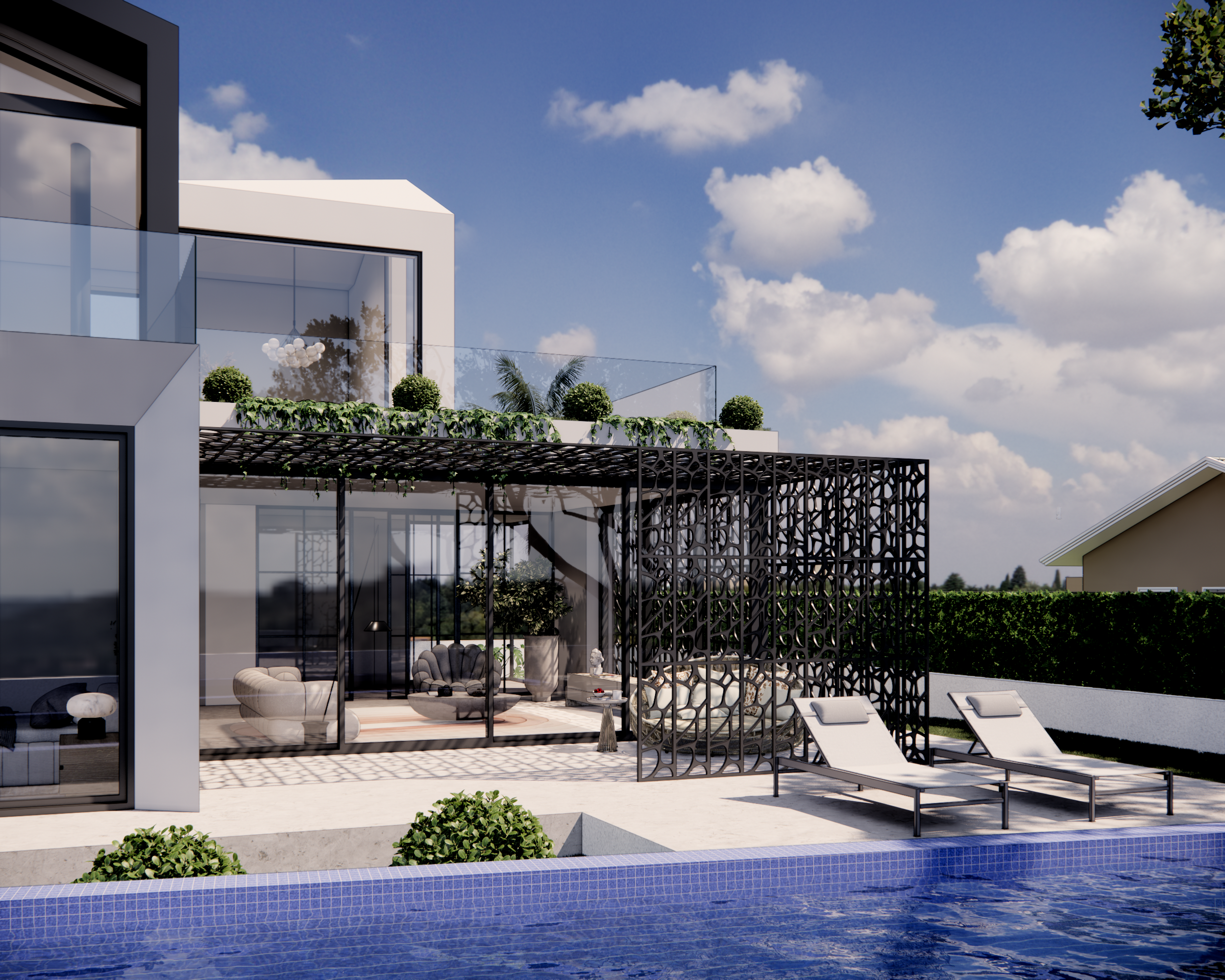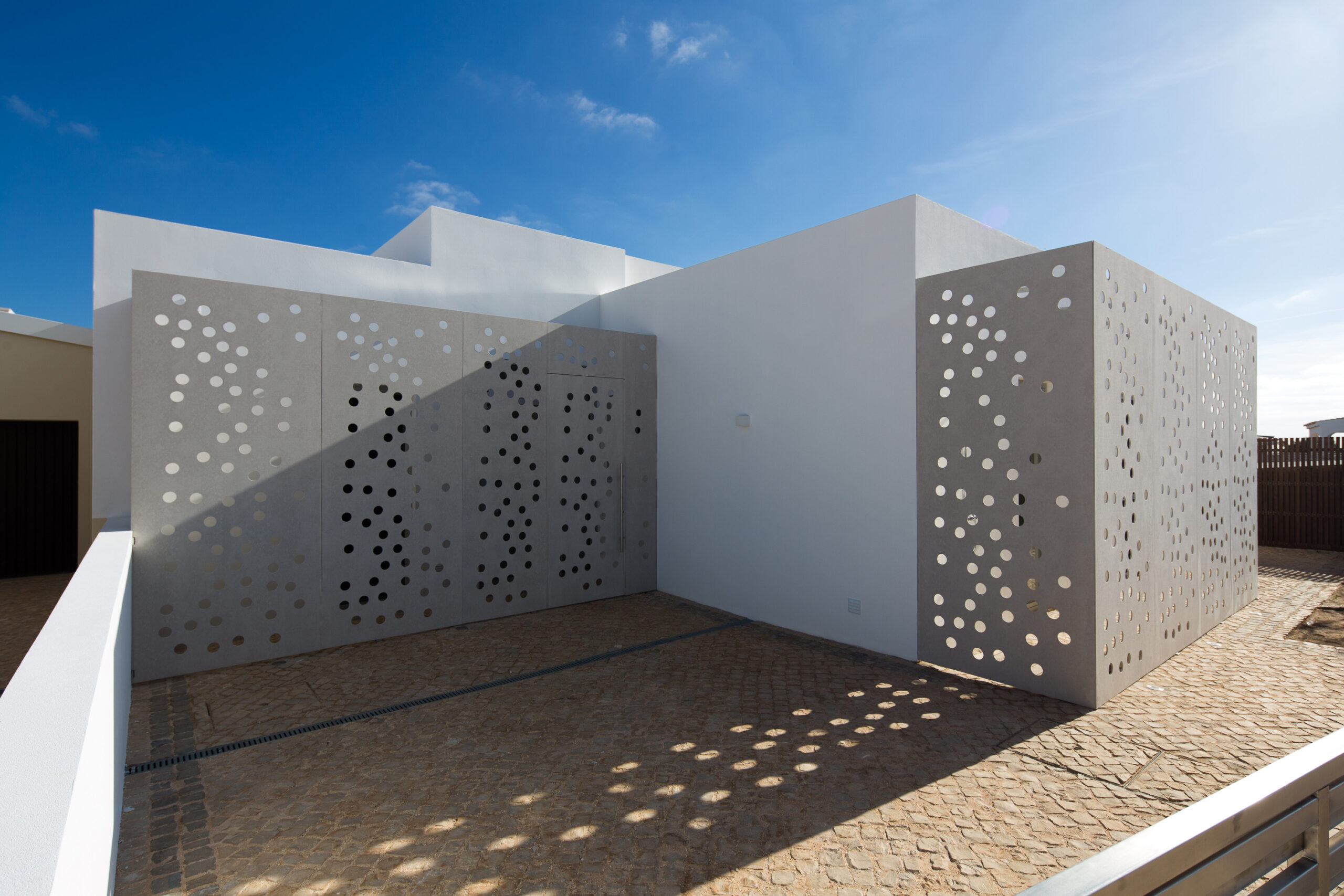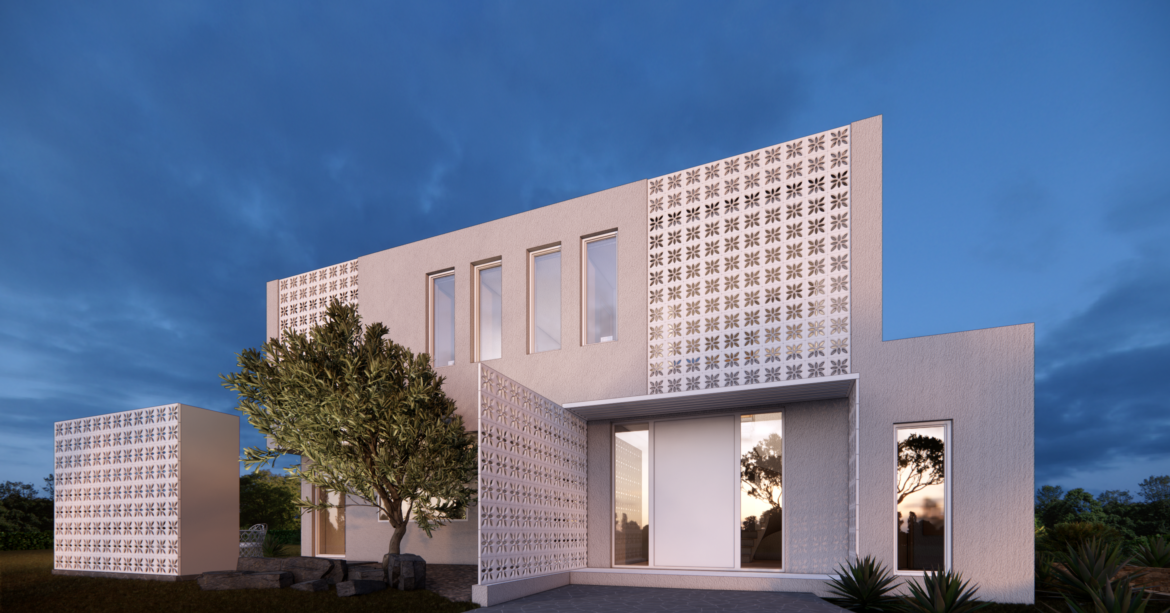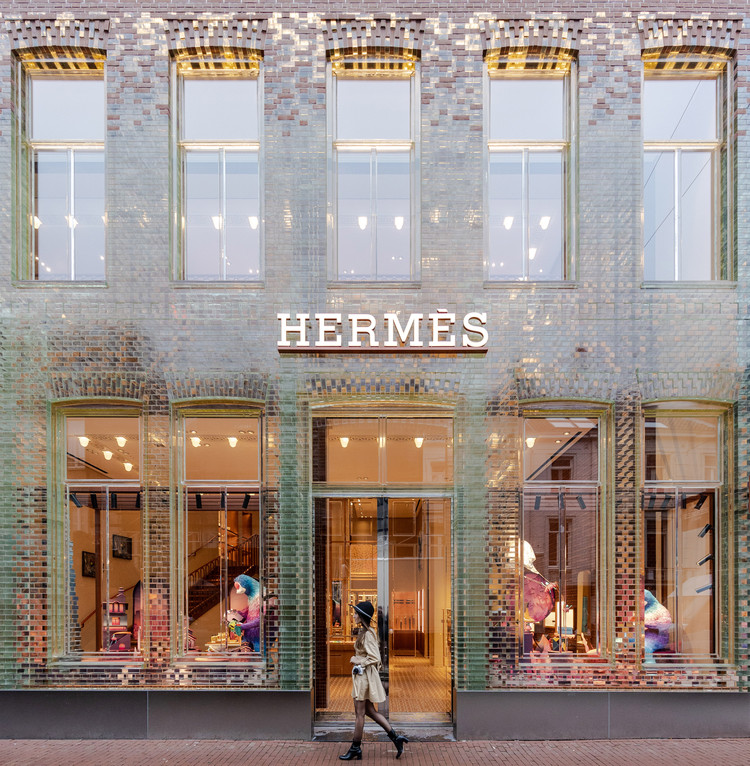In this captivating blog post, we delve into the world of semi-closed facades, uncovering their transformative impact on spatial design, light-play, ventilation, and thermal dynamics within architectural compositions.
The Concept of Semi-Closed Facades:
The quest for innovative design solutions that seamlessly merge aesthetics with functionality is an ongoing journey. One such approach we have embraced in our recent projects is the creation of semi-closed facades, utilizing materials such as glass bricks, metal sheets, ornamental terracotta bricks, and perforated wood panels. These decorative facades go beyond mere embellishments, serving as purposeful elements that redefine the boundaries between indoor and outdoor spaces.
Crafting Semi-Outdoor Enclaves:
Semi-closed facades, embody the perfect fusion of art and functionality. By intentionally arranging these materials, we create semi-outdoor spaces that blur the lines between the structure’s confines and the expansive outdoors,
Dynamic Light and Shade:
The fenestred design of these walls infuses the interior with an enchanting play of light and shade, creating a captivating atmosphere.
Thermal Influence of Semi-Closed Spaces:
The thermal dynamics introduced by semi-closed facades are a crucial consideration in our design process. By allowing controlled amounts of sunlight to penetrate, these facades harness solar gain to warm spaces during colder seasons. Simultaneously, strategic material selection prevents excessive heat buildup, ensuring a comfortable indoor environment. This balance between thermal gain and regulation exemplifies our commitment to integrating aesthetics with environmental responsiveness.

Thoughtfully incorporated gaps and openings within these facades facilitate the flow of air, establishing a natural ventilation system. This not only ensures a constant exchange of fresh air but also reduces reliance on mechanical systems, promoting sustainability and energy efficiency in building design.
1. Glass Bricks: Glass bricks with their translucent properties, infuse interiors with a soft, diffused glow, creating a captivating atmosphere, allowing the passage of light while maintaining a level of opacity. Glass bricks contribute to an enchanting atmosphere, establishing a sense of allure within the space, without compromising privacy.
Photography: Philipp Heer | Design: MVRDV
2. Metal Sheets:
The reflective nature of metal sheets enhances the interplay between the building facade and its surroundings. This reflective quality allows the facade’s appearance to change, creating dynamic visual effects, as it mirrors the variations in lighting conditions and the reflected elements of the surrounding environment.
Moreover, the strategic placement of these metal sheets can manipulate the amount of shade within the building, ensuring an optimally lit and comfortable environment. These sheets can be positioned to control the influx of sunlight into the interior spaces and could potentially be integrated into a movable structure that adjusts the facade in response to solar radiation levels.
In essence, this creates an intelligent facade that can adapt to environmental conditions, closing to provide shade when necessary, and opening to allow sunlight when desired.
3. Terracotta Ornamental Open Bricks:
Ornamental terracotta bricks are a captivating addition to any architectural design. Traditionally used for floors and plaster, terracotta has stood the test of time due to its durability and natural aesthetic. Now, we incorporate it as semi-dividing walls, further enhancing its appeal.
Specially designed terracotta bricks with intentional openings bring an element of ornamentation and playfulness to the facade. The use of terracotta introduces earthy tones and textures, elevating the visual richness of the fenestrated facade, creating a harmonious blend of form and function.
4. Wood or other composite panels introduce a warm and natural element to fenestrated facades. These panels are typically crafted from various wood species, offering versatility in terms of colors and textures. As a fenestrated facade material, wood panels provide a connection with nature and create a sense of warmth. The natural grains and patterns of wood add a tactile and visually appealing dimension, making the facade more inviting.

In the realm of architectural innovation, decorative semi-closed facades embody the artistry of design and the functionality of purpose. By incorporating these fenestred walls that can be composed of several different materials, we sculpt spaces that captivate the eye and enhance the quality of life within. As our exploration of these transformative facades continues, we embark on a journey to redefine the use of glass bricks, metal sheets, ornamental Terracotta bricks or wood panels.



